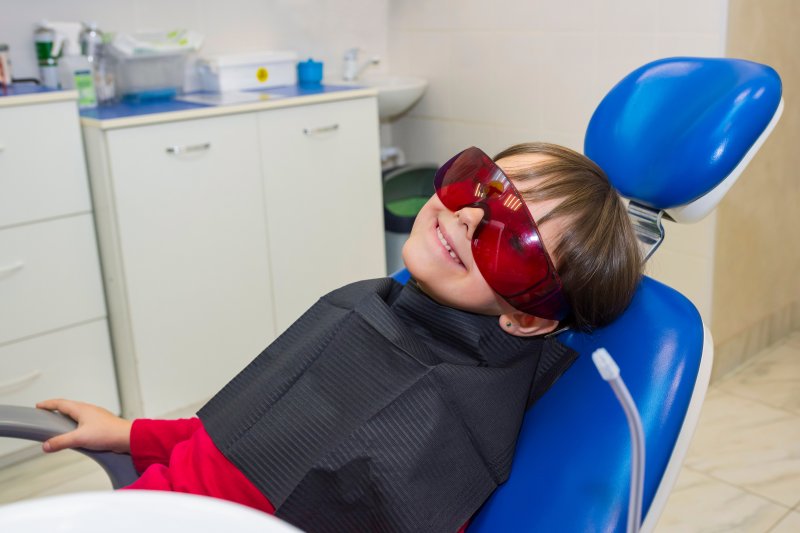
Dental anxiety is common among children, especially if they are unfamiliar with the sights and sounds of a dental office. As you think about ways to calm your child’s nerves before their treatment visit, you may wonder about the safety and effectiveness of sedation dentistry. Let’s discuss the benefits of nitrous oxide and general anesthesia and how they can change the way your child views visiting the dentist.
Safe Sedation Options
Sedation dentistry can be an effective way to keep children comfortable and at ease when receiving treatment. Your child’s dentist will want to know about their medical history to better determine which method should be used during their appointment. Two of the most common forms of sedation offered include:
- Nitrous Oxide: Also referred to as laughing gas, nitrous oxide is a mild form of sedation that is inhaled through a mask that is placed over your child’s nose. The effects occur within minutes, allowing your child to become more relaxed and at ease. Once the mixture is turned off and the mask is removed, the effects will quickly dissipate, allowing them to return to normal activity following their appointment.
- General Anesthesia: General anesthesia is recommended for children with extreme dental anxiety or who require extensive treatment. If provided to your child, you can expect them to be fully sedated, so they will not be awake. Throughout the appointment, they will be closely monitored by an anesthesiologist to ensure their safety and comfort.
Post-Treatment Expectations
Many parents may feel uncertain about allowing their child to be sedated during a dental appointment, but the truth is that meeting with a board-certified pediatric dentist to discuss the benefits and expectations can alleviate many of the most common concerns.
A popular question you might ask when considering sedation dentistry for your child is what should be expected after treatment is complete.
- If your child receives nitrous oxide, they will likely begin to feel like their normal self after their appointment. Most children experience no ill side effects after treatment and can resume regular activity after returning to school or home. In rare cases, it is possible for a child to feel slightly nauseous or fatigued after receiving nitrous oxide.
- If general anesthesia is administered to your child, you can expect them to remain tired the rest of the day after returning home from their appointment. They may feel dizzy or nauseous as well. They should avoid any strenuous activity and eat only soft foods. Your child’s dentist will provide additional aftercare instructions based on the type of procedure they received.
At Smiles University Pediatric Dentistry, our team will always put your child’s safety first. Our team of board-certified pediatric dentists is here to closely monitor all sedation cases and will ensure your child receives the care and attention they need in a safe and comfortable environment.
About the Author
Dr. Adam Goodwin is a compassionate Bastrop pediatric dentist who earned his dental degree from Georgia Health Sciences University before completing a two-year pediatric specialty training. As one of the three dentists at Smile University Pediatric Dentistry, he and the team are dedicated to keeping young smiles healthy and vibrant year-round. For more tips on maintaining your child’s oral health or to schedule a check-up, visit our website or call (512) 321-5437. We’re here to support your family’s dental health journey!
